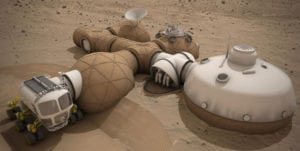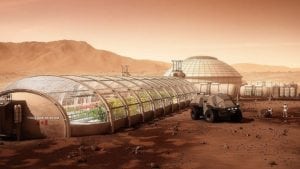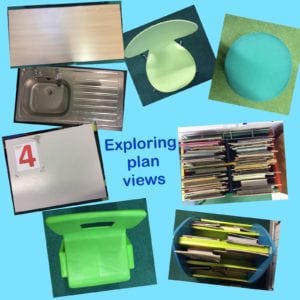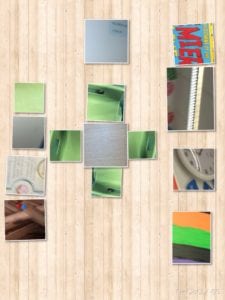Idea to Explore
This second example from the Seeing STEAM group considers the question of how we can design a library in space.
The outline below gives a detailed picture of how children aged 6-7 worked with the topic.
Discover
We gave the pupils the scenario that we would be moving to space and their challenge was to design a library for the new space habitat. This was inspired by photos and videos of space stations and space habitats from life of sci-fi.



Define
In order to design their library, the pupils needed to understand how to plan a three-dimensional space and show this in two dimensions. To introduce this, we took some photos of familiar classroom objects and furniture and challenged them to work out what they were, seen from above.
The pupils then used iPads to take their own photos of classroom objects and furniture from above to show them in aerial or plan view as a way of learning about this approach and becoming more familiar with it.

Processed with MOLDIV
At this stage, the pupils were taught that they must hold the iPad over an object aiming for seeing the object on the screen clearly. Some also cropped the image after taking the photo. The pupils had to solve the problem of taking a photo at different orientations depending on the object they wanted to photograph.
When they had collected the photos they opened the app PicCollage. Here they chose a room as a background, then added and manipulated their photos to show a room with furniture in it.

This experience allowed them to learn how to show and manipulate familiar objects in plan view.
Develop
In the next stage, we encouraged the pupils to use their imagination to develop drawings of objects and furniture that they might have in their space library.
They also researched on the internet and chose photos to use here.
They discussed what was needed in a library in space, what it might look like, any similarities and differences between libraries they know of, can see on the internet or can imagine.
When they had some features of their library, they photographed them and again used PicCollage to assemble them into their design for the library.

Processed with MOLDIV
Deliver
The pupils made a plan that showed what their space library would look like.

International Collaboration
Other countries worked on other areas of the space habitat and the plans of the library would be connected to these (see previous unit).
Reflections and Questions
Working with younger children it was more of a challenge to help them understand how to show the designed space in a plan and also to leave behind their existing understanding of what a library is.
Some key questions were:
- Will libraries of the future look like the libraries we know now?
- Will libraries as physical spaces even exist?
- If we moved to space, how would we take the knowledge we have with us?
Resources
- Videos and photos of living in space
- PicCollage app
- iPads (camera)
- Paper, pencils
- Understanding of plan view and representing 3d objects in 2d on paper or on the screen
STEM to STEAM Analysis
Science: Understanding of space survival themes
Technology: PicCollage, iPad photography
Engineering: An extension would be to build the model library
Art: Design, form, drawing and planning aerial views
Mathematics: Working with plan views, planning a 3D space in 2D
